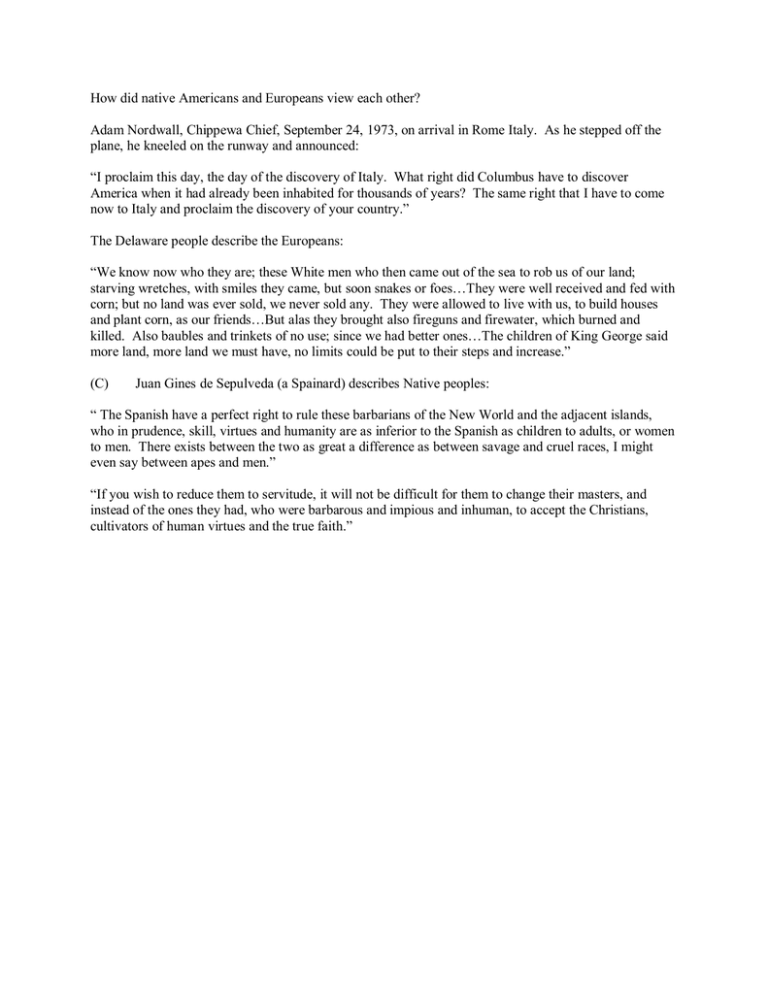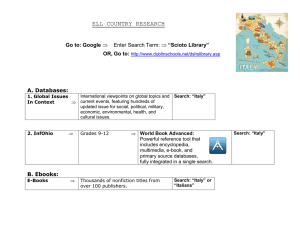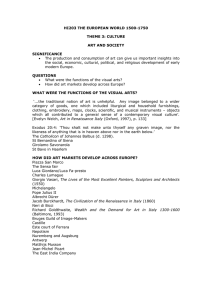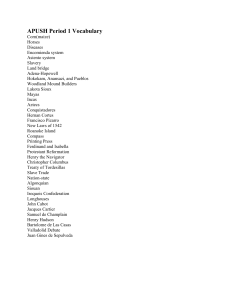How did native Americans and Europeans view each other?
advertisement

How did native Americans and Europeans view each other? Adam Nordwall, Chippewa Chief, September 24, 1973, on arrival in Rome Italy. As he stepped off the plane, he kneeled on the runway and announced: “I proclaim this day, the day of the discovery of Italy. What right did Columbus have to discover America when it had already been inhabited for thousands of years? The same right that I have to come now to Italy and proclaim the discovery of your country.” The Delaware people describe the Europeans: “We know now who they are; these White men who then came out of the sea to rob us of our land; starving wretches, with smiles they came, but soon snakes or foes…They were well received and fed with corn; but no land was ever sold, we never sold any. They were allowed to live with us, to build houses and plant corn, as our friends…But alas they brought also fireguns and firewater, which burned and killed. Also baubles and trinkets of no use; since we had better ones…The children of King George said more land, more land we must have, no limits could be put to their steps and increase.” (C) Juan Gines de Sepulveda (a Spainard) describes Native peoples: “ The Spanish have a perfect right to rule these barbarians of the New World and the adjacent islands, who in prudence, skill, virtues and humanity are as inferior to the Spanish as children to adults, or women to men. There exists between the two as great a difference as between savage and cruel races, I might even say between apes and men.” “If you wish to reduce them to servitude, it will not be difficult for them to change their masters, and instead of the ones they had, who were barbarous and impious and inhuman, to accept the Christians, cultivators of human virtues and the true faith.”






